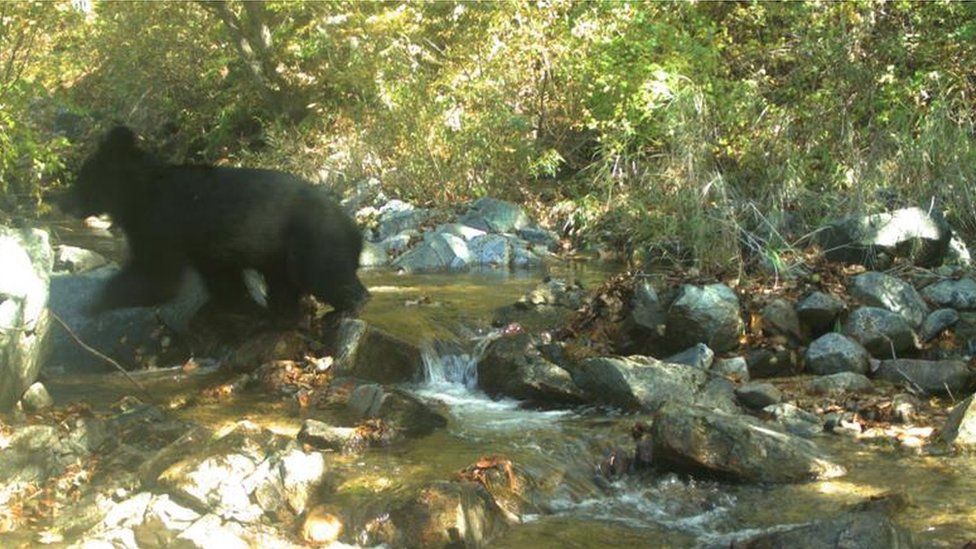Rare Asiatic Black Bear spotted in Demilitarised Zone
- Published

A rare Asiatic black bear has been spotted in the Demilitarised Zone (DMZ), South Korea's government says.
It was captured on video in the eastern part of the zone that divides North and South Korea.
The Asiatic black bear is described as vulnerable by the International Union for Conservation of Nature (IUCN).
The DMZ has become a haven for plants and wildlife, with South Korea's government predicting there are more than 100 endangered species there.
A ministry official told Yonhap news: "It is believed that the photographed bear, about eight to nine months old and weighing about 25 to 35 kilograms, is a descendant of the Asiatic black bears who inhabited the DMZ region for quite a long time."
South Korean soldiers had reported seeing bears in the past. However, there has not been any photographic evidence.
The cameras were installed by South Korea's National Institute of Technology.
The DMZ is a strip of land 250km (155 miles) long and 4km (2.5 miles) wide that runs across the Korean Peninsula. It is currently heavily mined and fortified with barbed wire, rows of surveillance cameras and electric fencing.
It was created following the signing of the armistice that brought an end to the 1950-53 Korean War.
Around 6.5 million visitors come to the DMZ every year to peek through the fence at North Korea. However, thanks to a recent warming of ties between the two Koreas, hiking trails are being established in the DMZ near the border towns of Cheorwon and Paju.
The South Korean government has long been planning an "ecological tourism belt" in the area.
What animals reside in the DMZ?
Because the area is so cut-off, it has become a pristine nature reserve. According to South Korea's Ministry of Environment, there are more than 5,097 animal and plant species in the zone.
The red-crowned crane and black-faced spoonbill are among the rare birds that can be found in the DMZ.
The red-crowned crane is one of the rarest in the world, and classified as endangered by the IUCN. Its global population is estimated to number about 3,050.
Birds also migrate through the DMZ to Mongolia, China, Russia, the Philippines and Australia.
Other animals such as the Amur goral, Cinereous vulture and Eurasian lynx have been spotted in the area.
Seung-ho Lee, president of the DMZ Forum told the BBC: "Many researchers and scholars emphasize the biodiversity of the region because there is no human contact, which is prohibited because of landmines. Some famous ecologists in the US said it is actually a paradise. The animals we can see are very fantastic mammals and bird species but researchers say there are more than just eye-catching species such as plants and trees and flowers."
He added that there had been tiger footprints seen in the area and some US soldiers had reported seeing a tiger-like figure in the past.
Mr Lee said that the future of the area "depends on how the peace movement is between North and South Korea."
"We are always worrying about the other side of destruction and and what might happen if something goes really wrong, for us, it's a dilemma."
- Published1 October 2018
- Published14 November 2017
- Published14 November 2017